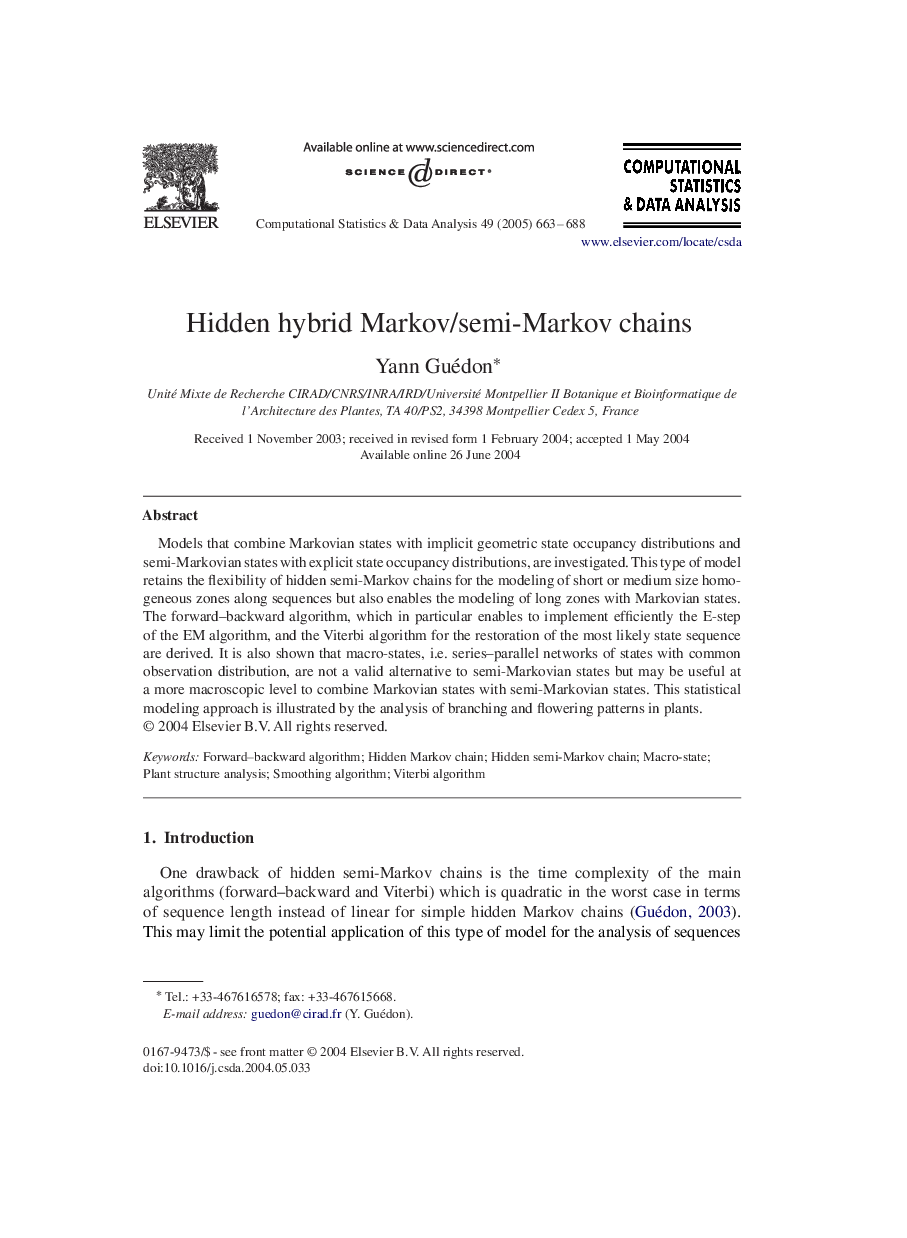| Article ID | Journal | Published Year | Pages | File Type |
|---|---|---|---|---|
| 10328124 | Computational Statistics & Data Analysis | 2005 | 26 Pages |
Abstract
Models that combine Markovian states with implicit geometric state occupancy distributions and semi-Markovian states with explicit state occupancy distributions, are investigated. This type of model retains the flexibility of hidden semi-Markov chains for the modeling of short or medium size homogeneous zones along sequences but also enables the modeling of long zones with Markovian states. The forward-backward algorithm, which in particular enables to implement efficiently the E-step of the EM algorithm, and the Viterbi algorithm for the restoration of the most likely state sequence are derived. It is also shown that macro-states, i.e. series-parallel networks of states with common observation distribution, are not a valid alternative to semi-Markovian states but may be useful at a more macroscopic level to combine Markovian states with semi-Markovian states. This statistical modeling approach is illustrated by the analysis of branching and flowering patterns in plants.
Keywords
Related Topics
Physical Sciences and Engineering
Computer Science
Computational Theory and Mathematics
Authors
Yann Guédon,
